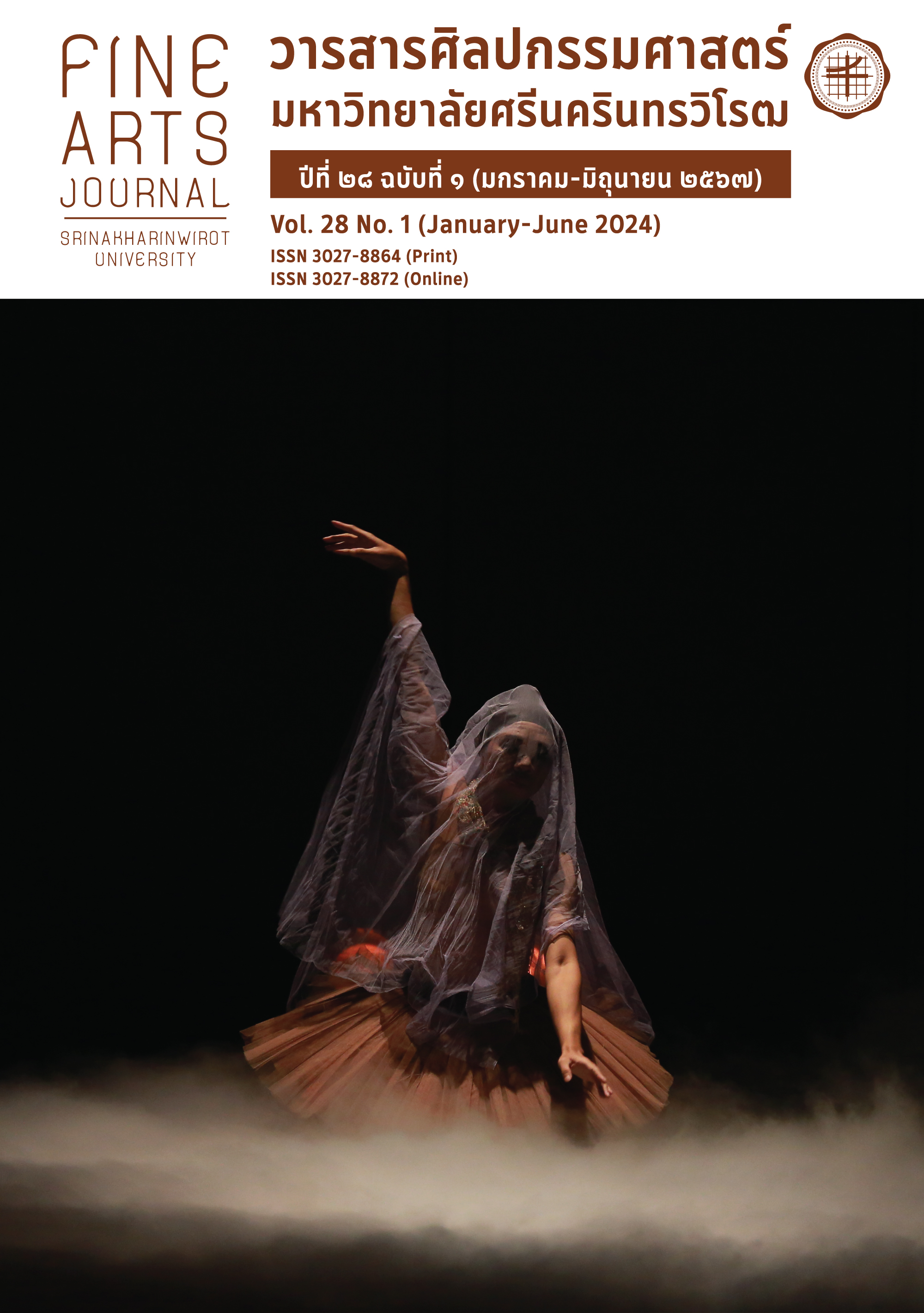COGNITIVE EDUCATION TRADITIONAL WOVEN FABRIC PATTERNS IN UTHAI THANI
Keywords:
knowledge, mother or padlock pattern, protection or accompanying patternsAbstract
Weaving fabrics and weaving patterns in Uthai Thani Province are woven fabrics of the Lao Khrang group. Color patterns have specific characteristics. Pattern making Placing the colors of the skirt and the skirt's feet show uniqueness. What happens about patterns is that some weavers do not know the names of their patterns. The name of the pattern is based on the imagination of the weavers of each weaving group. The same pattern can be called with different names, and there is no norm for naming patterns. Therefore, learning and transferring knowledge about weaving patterns in the Uthai Thani province is difficult. With reference to the aforementioned problems, this study was conducted with its purposes 1) to study and gather knowledge about Uthai Thani indigenous fabric patterns that are important for teaching management of integrated learning and the community, 2) to develop the professional skills in weaving local fabrics for youth and people in the community in Uthai Thani province, 3) to conserve and transfer the knowledge and the local wisdom of woven fabrics in Uthai Thani. The in-depth interviews were utilized as the research instrument to collect the data which were analyzed systematically. The results found that 1) the history of weaving of the Tai Krang or Lao Krang people began at the time when King Rama V abolished slavery and these people lived together in their village. The women also revived the weaving to use as apparel. Later, weaving was developed into a pattern to create beauty, and it became a famous product for the community. 2) Today, weaving culture has expanded throughout Uthai Thani, and they have gathered basic weaving knowledge to convey to students in the community. The components of the stripes are important for conservation and commerce. 3) The components of the stripes were 21 mother or padlock patterns, 17 elements, and 6 separators and polished stripes. The results also indicated that participants want to store the knowledge in the form of a document and electronic media to reduce costs and provide the easy access. This will lead to education in the community as well as a sustainable economy.
Downloads
References
ธำรงชาติ วงศ์อารีย์, ไวพจน์ ดวงจันทร์, ภูมิพัฒน์ ชมพูวิเศษ และภาณุมาศ พุฒแก้ว (2558). ผ้าพื้นเมืองไทพวน: ลวดลายและเส้นสาย
อารยธรรม บ้านเชียง จากอดีตสู่ปัจจุบัน. วารสารวิจัยการพัฒนาชุมชนและคุณภาพชีวิต, 3(2), 195-202.
ภูเนต จันทร์จิต, แสน ไชยบุญ และพิสิษฐ์ เอมดวง. (2557). ไทยโซ่ง: การอนุรักษ์ผ้าโบราณเพื่อสืบสานอัตลักษณ์ทางชาติพันธุ์.
วารสารวิจัยวัฒนธรรม กรมส่งเสริมวัฒนธรรม, 4(1), 58-62.
อารดา พลอาสา. (2564). การศึกษาองค์ความรู้ การอนุรักษ์และส่งเสริมการเพิ่มคุณค่าการทอผ้าไหมหางกระรอกคู่ตีนแดง อำเภอนา
โพธิ์และอำเภพุทไธสง จังหวัดบุรีรัมย์. วารสารวิจัยกรมส่งเสริมวัฒนธรรม, 4(1), 11-22.
Downloads
Published
How to Cite
Issue
Section
License

This work is licensed under a Creative Commons Attribution-NonCommercial-NoDerivatives 4.0 International License.






